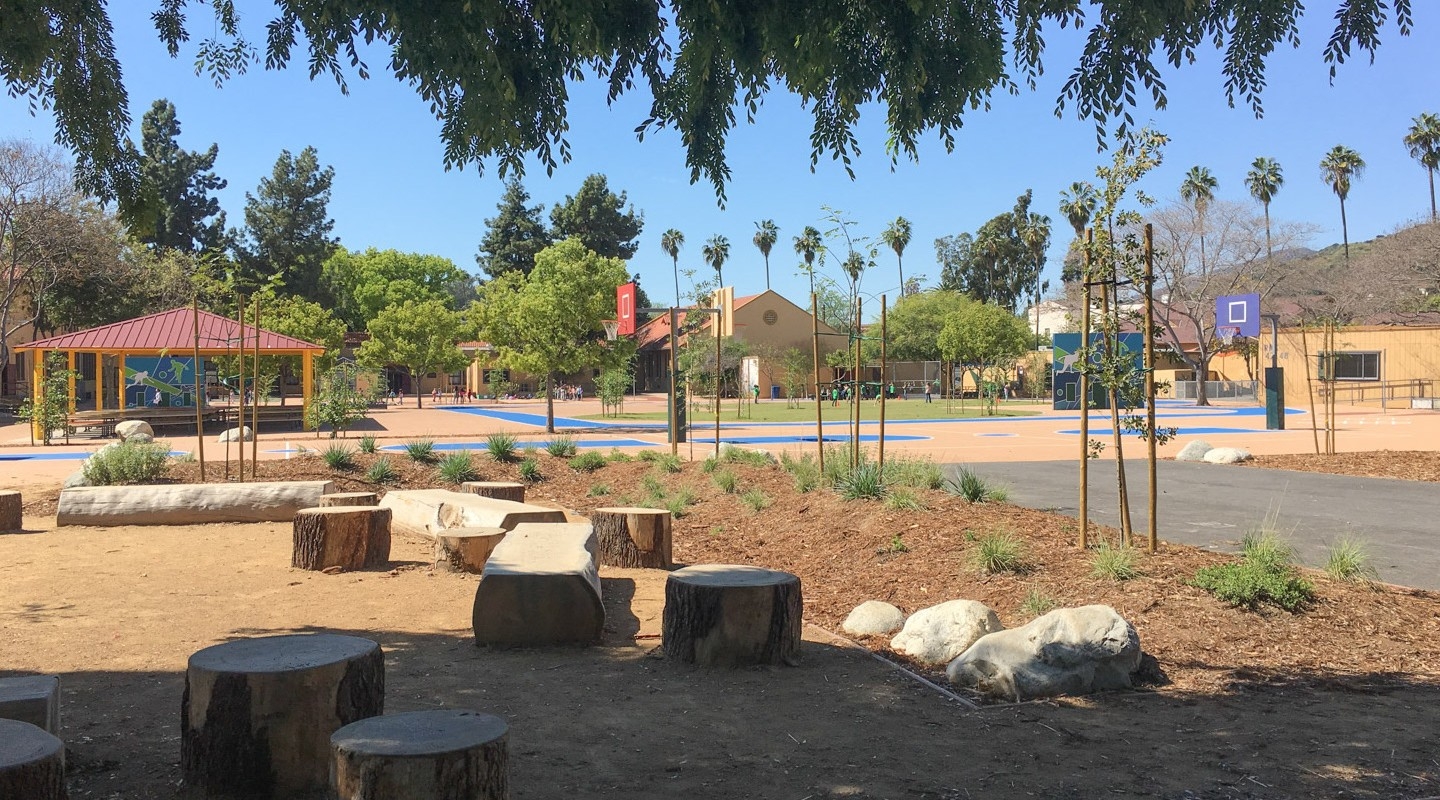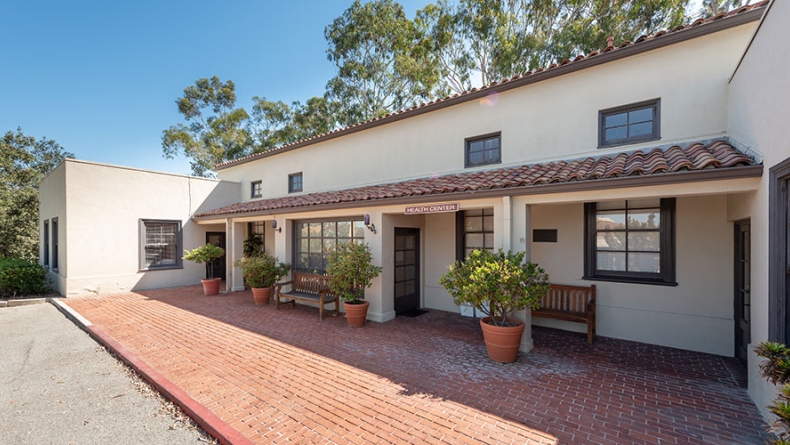Replacing playground asphalt with grass, trees and other natural features increases physical activity and creative play among students while reducing physical and verbal conflict, a new Occidental College study has found.
Published in the American Journal of Preventive Medicine, the study by Occidental Associate Professor of Kinesiology Marcella Raney and two of her students--Colette Hendry ’18 and Samantha Yee ’18--is the first to document that the impacts of playground greening persist over time.
“I am hopeful that the results from this study will inspire increased collaborative efforts and funding for large-scale green schoolyard renovations in urban schools,” Raney says. “I look forward to working with colleagues and school districts throughout Los Angeles County to determine how much green space and which specific design features provide for optimal environmental and student health benefits.”
The findings are particularly significant for low-income students in urban schools, including the two Los Angeles Unified School District elementary schools that participated in the study.
“More than 80 percent of Los Angeles children do not meet federal physical activity guidelines,” the report notes. “In part because of inactivity, 32 to 36 percent of Los Angeles children living in low-income urban neighborhoods are obese and more than 6 percent report fair or poor health status.”
The study also has important implications for how gender differences play out on the playground. In addition to large physical activity and general health inequities between disadvantaged and affluent students, girls are more likely to be sedentary on asphalt surfaces, it found.
The study focused on two Title I schools in Northeast Los Angeles—schools with large concentrations of low-income students. The first had approximately 21,000 square feet of asphalt playground replaced with grass, trees, mulch, boulders and log seating. The asphalt yard of the second school was left unaltered and students there served as a control population.
Some 355 students in the first through fifth grades at the school with the new green space were equipped with accelerometers and observed on the playground prior to the greening, immediately afterwards, and again four months later. The changes in recess behavior were noticeable and persisted over time, the researchers found.
For example, prior to greening the most popular recess activities included handball, kickball, tetherball, and foursquare. After the asphalt was replaced with green space, the most popular activities were tag/chasing, gymnastics (handstands and cartwheels), climbing, jumping, and making up games.
Overall, after greening sedentary activity (including watching others play and waiting for turns) declined 14 percent and vigorous activity increased 33 percent.
At the same time, after four months physical and verbal conflicts decreased by half. “Playground greening resulted in a significant decrease in minutes spent alone and a significant increase in the number of minutes spent in small groups,” the report says.




